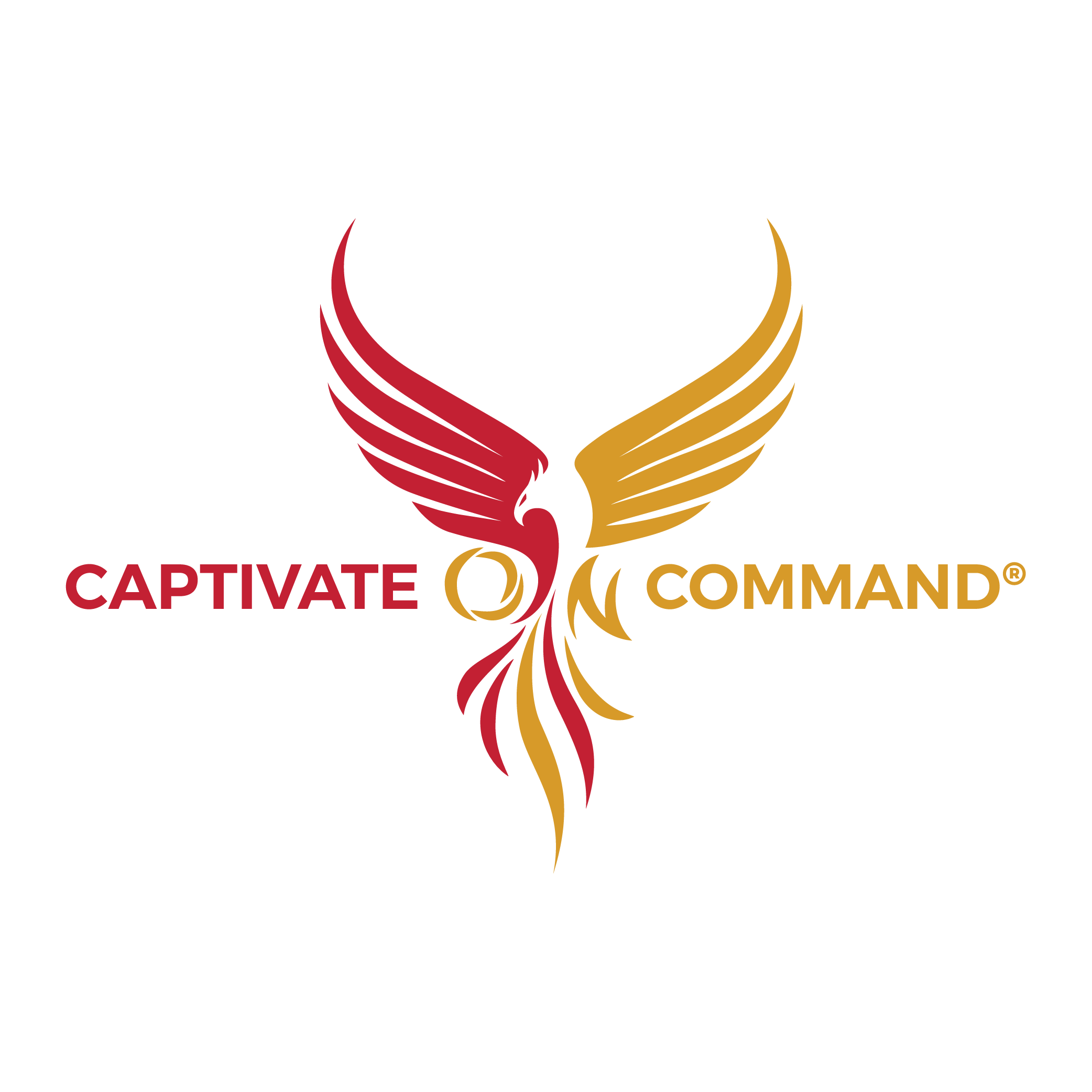Micro-Storytelling for Entrepreneurs: How to Tell 60-Second Stories That Inspire and Convert

We live in a world where people scroll before they think. Speakers and entrepreneurs fight for seconds of attention, and yet the ones who win aren’t louder. They’re clearer.
Sun defines micro-storytelling as “storytelling under 60 seconds that makes a huge impact.” In that short window, your goal isn’t to deliver every detail; it’s to create one spark of realization.
Think about the videos or posts that stop you mid-scroll. They make you pause and think, “I never thought of it that way.” That phrase signals transformation. It means your listener has connected the dots for themselves.
As Sun puts it, “You can’t change someone’s mind, but they can change their own mind when you make them say, ‘I never thought of it that way.’”
That’s influence. And influence is what every great speaker and entrepreneur ultimately builds through storytelling.
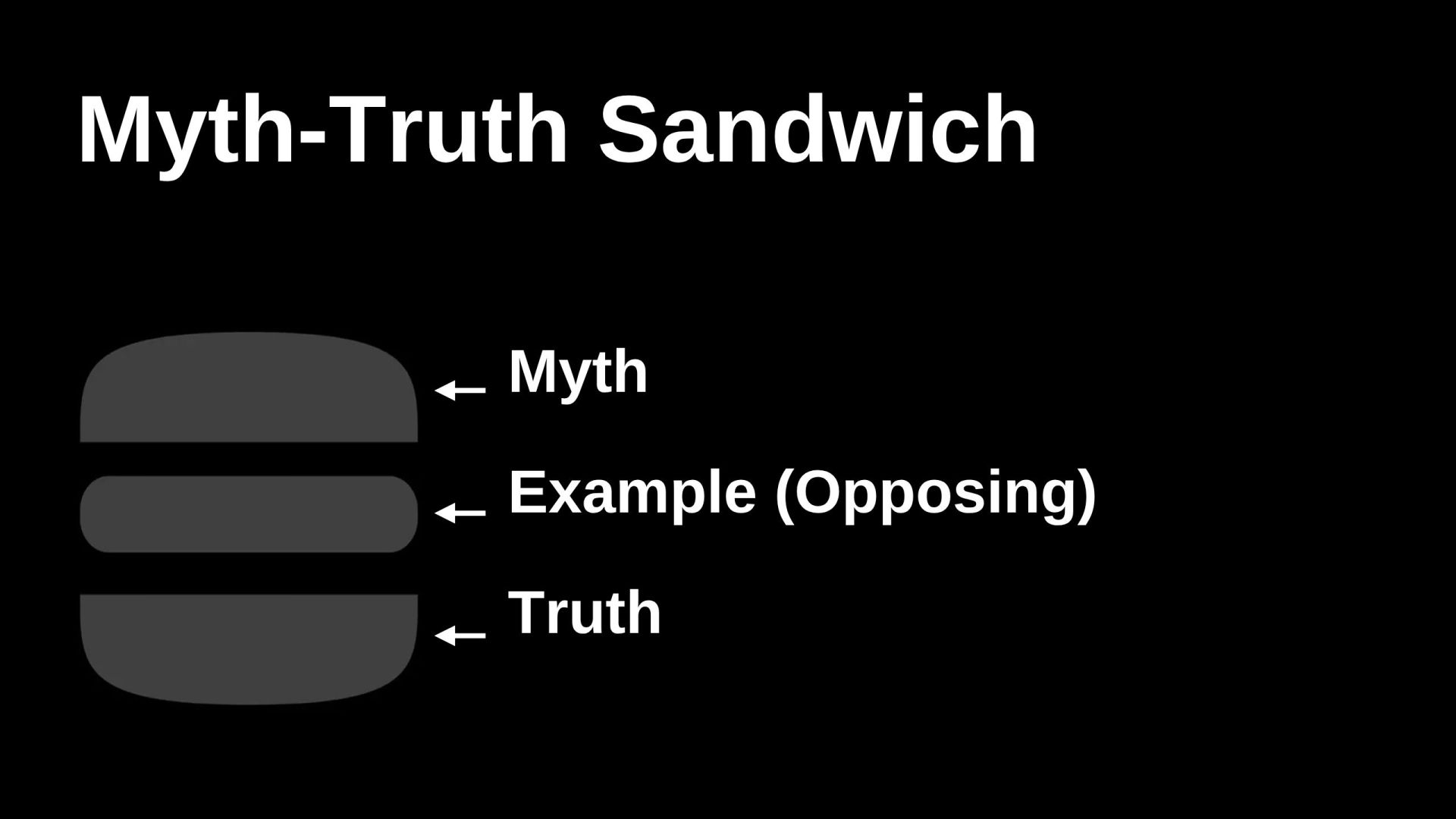
The Myth–Truth Sandwich: The Foundation of Every Micro-Story
If you struggle to find a starting point for your stories, this framework will save you.
Sun calls it the Myth–Truth Sandwich, and it works because it mirrors how people naturally process information.
Here’s the simple structure:
-
Myth: What most people believe.
-
Example: A story, observation, or metaphor that challenges that belief.
-
Truth: The new perspective you want your audience to see.
Here’s how it sounds in practice:
Myth: Most people think storytelling is about entertaining an audience.
Example: But have you noticed how the best TED Talks make you rethink something, not just laugh?
Truth: The real goal of storytelling isn’t to share more information; it’s to create transformation every time you speak.
This is the same pattern you find in movies, sales pitches, or keynote moments. A belief is introduced, something challenges it, and a truth emerges.
Once you internalize this rhythm, you can apply it anywhere: in Reels, in keynotes, in sales calls, or when teaching on camera.
Exercise: Build Your Own Myth–Truth Story
Use this fill-in-the-blank formula to create your first micro-story.
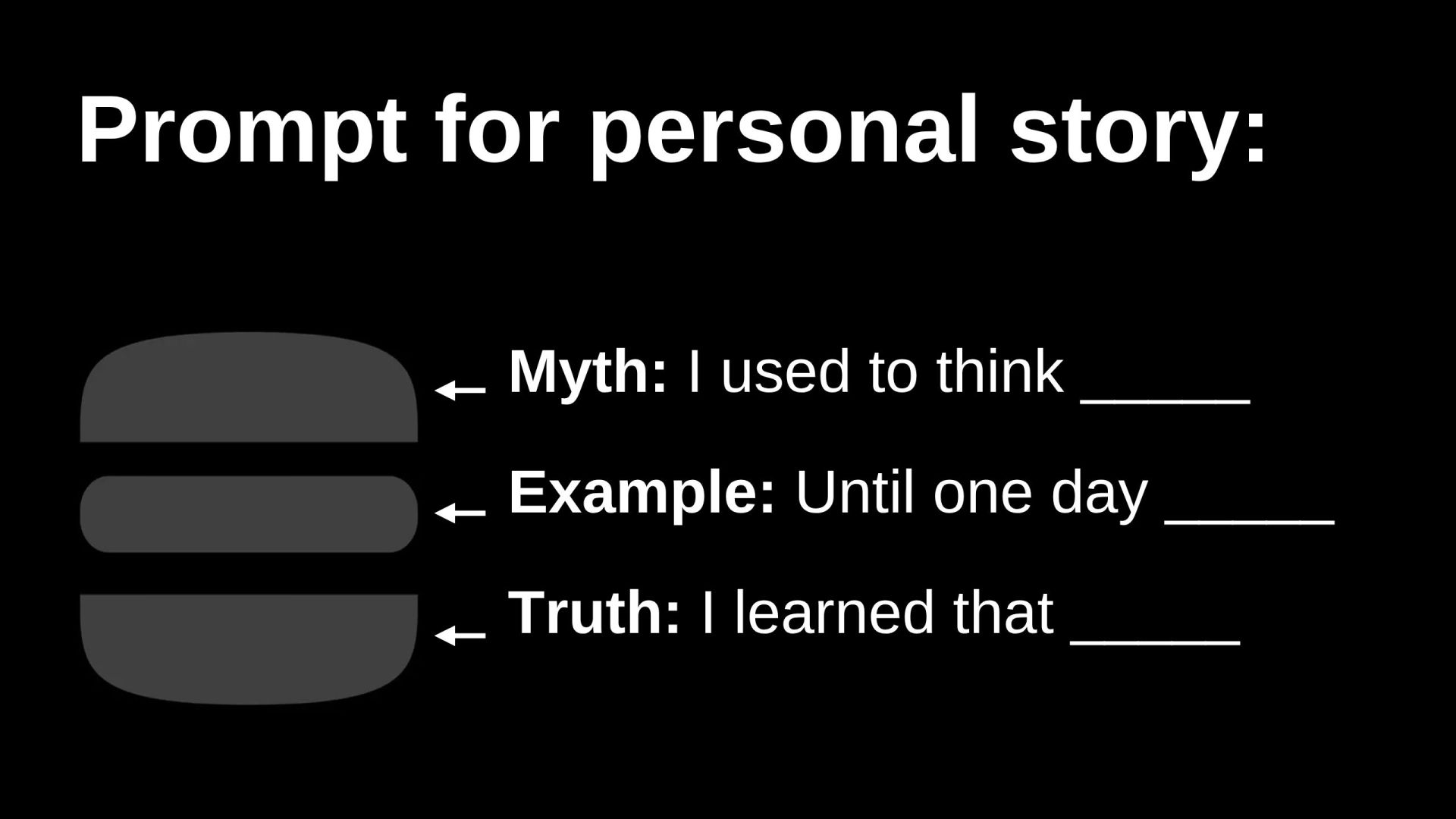
How to Find Stories That Stick
Remember the Unexpected
Transformation often hides inside surprise. Look for the moments in your life that didn’t go the way you planned. Those experiences usually carry the biggest lessons.
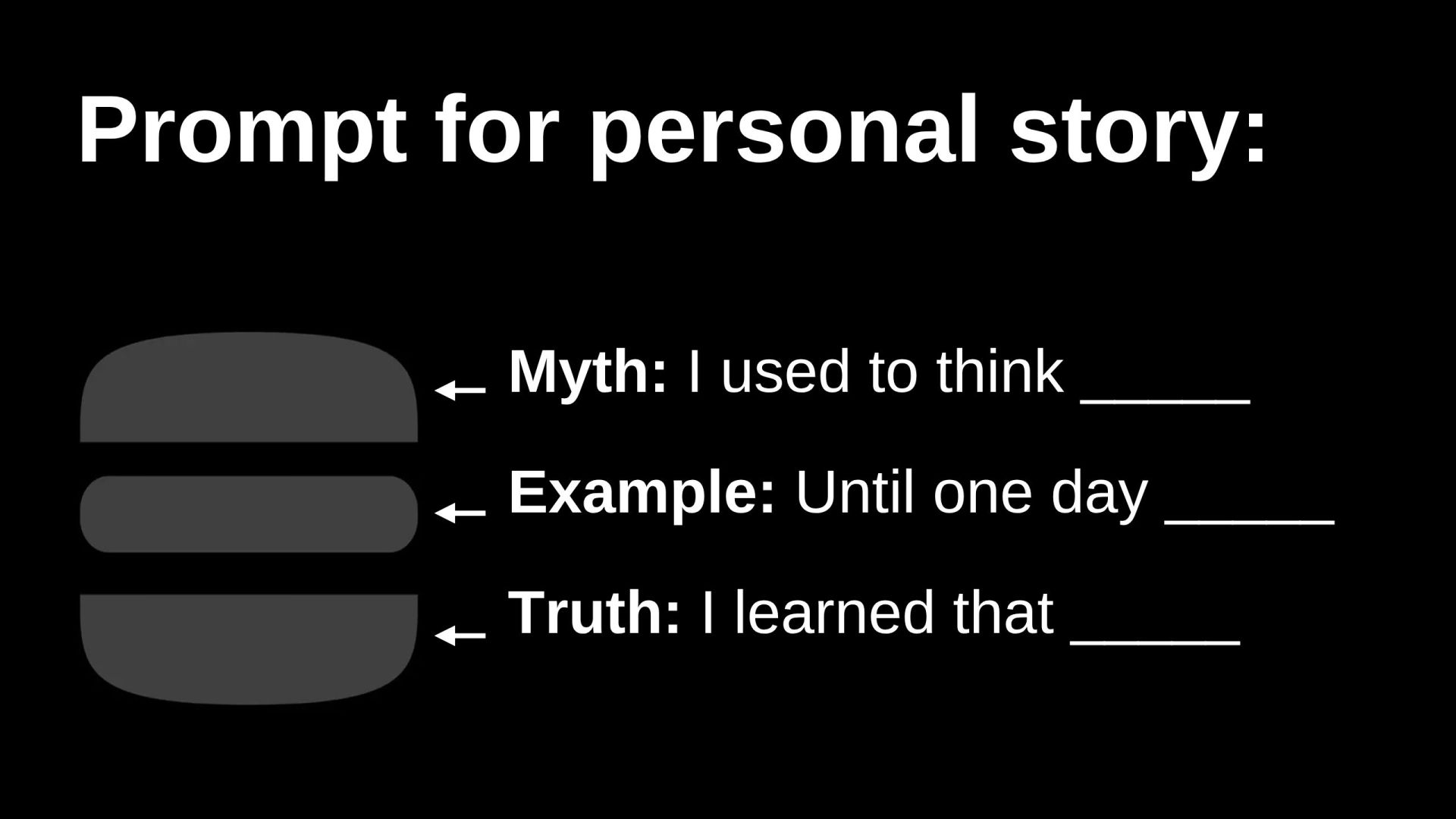
Step Into Someone Else’s Perspective
Use Contradictory Advice
The world is full of catchy sayings that cancel each other out. When you explore the tension between them, you uncover powerful insights.
Prompt:
“We’ve all heard ‘____,’ but sometimes the opposite is true, like when ______.”
Example:
We’ve all heard “go big or go home,” but sometimes it’s the small consistent actions that lead to the biggest results.
Recognize When Both Sides Are True
Spot Overcorrections
Use Analogies
Pull from Pop Culture
Pop culture gives you a shortcut to connection. A familiar movie, lyric, or meme can help your audience see your point instantly.
Prompt:
“Remember that moment in ______? That’s exactly like ______.”
Example:
Remember that moment in Mean Girls when they compliment a skirt they secretly hate? That’s how fake authenticity feels online. People can sense it right away.
Use History, Science, or Data
Anchoring your story in facts builds credibility. Data and science can validate your truth while keeping it grounded.
Prompt:
“According to ______, ______. That proves that ______.”
Example:
According to Harvard research, people remember stories up to 22 times more than facts. That proves data doesn’t drive change; stories do.

The Micro-Story Flow for Speakers and Entrepreneurs
Here is a micro-story flow, inspired by Sun’s framework but designed for speakers and creators:
- Hook the belief. State the myth or assumption your audience already has.
2. Challenge it. Show an example or analogy that makes them see it differently.
3. Deliver the truth. Reframe their belief with insight.
4. Tie it to your message. Connect it to your product, talk, or core value.
Why Micro-Stories Build Influence
Sun Yi often says that influence is the new oil. He’s right. You can have the best information in the world, but without influence, it doesn’t spread.
Micro-stories build influence because they change how people feel before they decide what to think. They connect logic to emotion.
Here’s the difference between information and transformation:
| Old Way | Micro-Storytelling Way |
| “Here’s what I do.” | “Here’s what I’ve learned.” |
| Selling features | Sharing realizations |
| Talking at your audience | Guiding them to their own insight |
Practice: Turn Ideas into Stories
Exercise 2: Reverse an “Aha” Moment
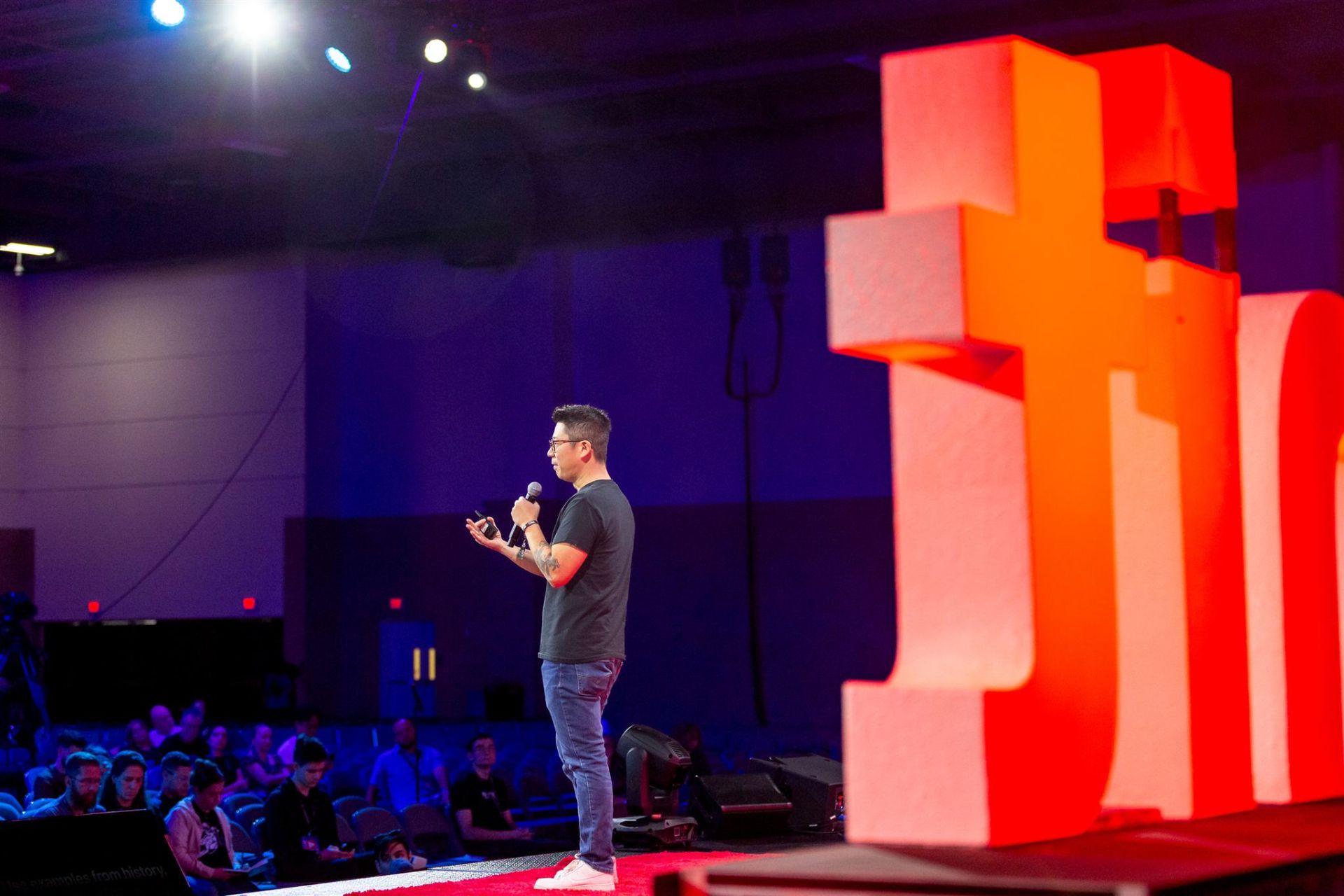
How to Make Micro-Storytelling Your Signature Style
Every speaker and entrepreneur has their own voice. Micro-storytelling gives that voice structure without making it sound scripted.
Here’s how to adapt it to your role:
-
If you are a coach: Use stories to simplify transformation. Teach lessons through your own experiences.
-
If you are a creative entrepreneur: Share behind-the-scenes stories that reveal how you think, not just what you create.
-
If you are a brand builder: Tell stories that make your values memorable.
-
If you are a speaker: Use micro-stories as bridges between your main points so each idea lands emotionally.
The purpose of storytelling isn’t to impress. It’s to help your audience feel seen and understood.
Mistakes That Weaken Stories
Even strong communicators sometimes miss the mark. Here are three mistakes I see often, along with how to fix them.
-
Explaining too much.
If you have to explain your story, it’s not clear enough. Edit until the story shows the point on its own. -
Making yourself the hero.
Your story should guide your audience to their own realization. You are the coach, not the champion. -
Confusing authenticity with oversharing.
Being real doesn’t mean revealing everything. It means being intentional about what serves your audience’s growth.
As Sun says, “You can be authentic and private at the same time. You can be public and still be fake.” Remember, authenticity is alignment, not exposure.
The Storyteller’s Mindset
- What belief does my audience hold that I can challenge?
- What story or analogy will make them see it differently?
- What truth will they carry with them after I speak?
Your Micro-Storytelling Toolkit
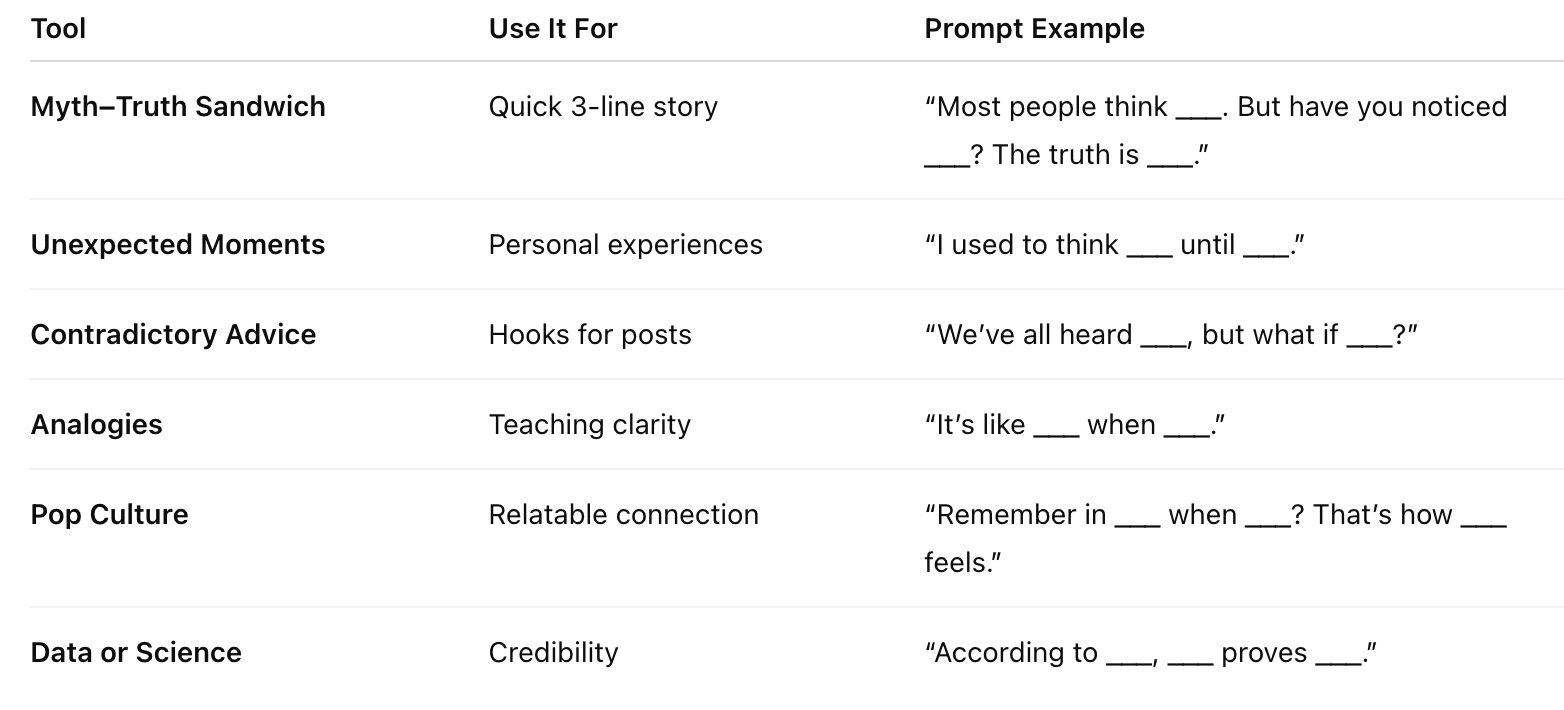
Final Thoughts
